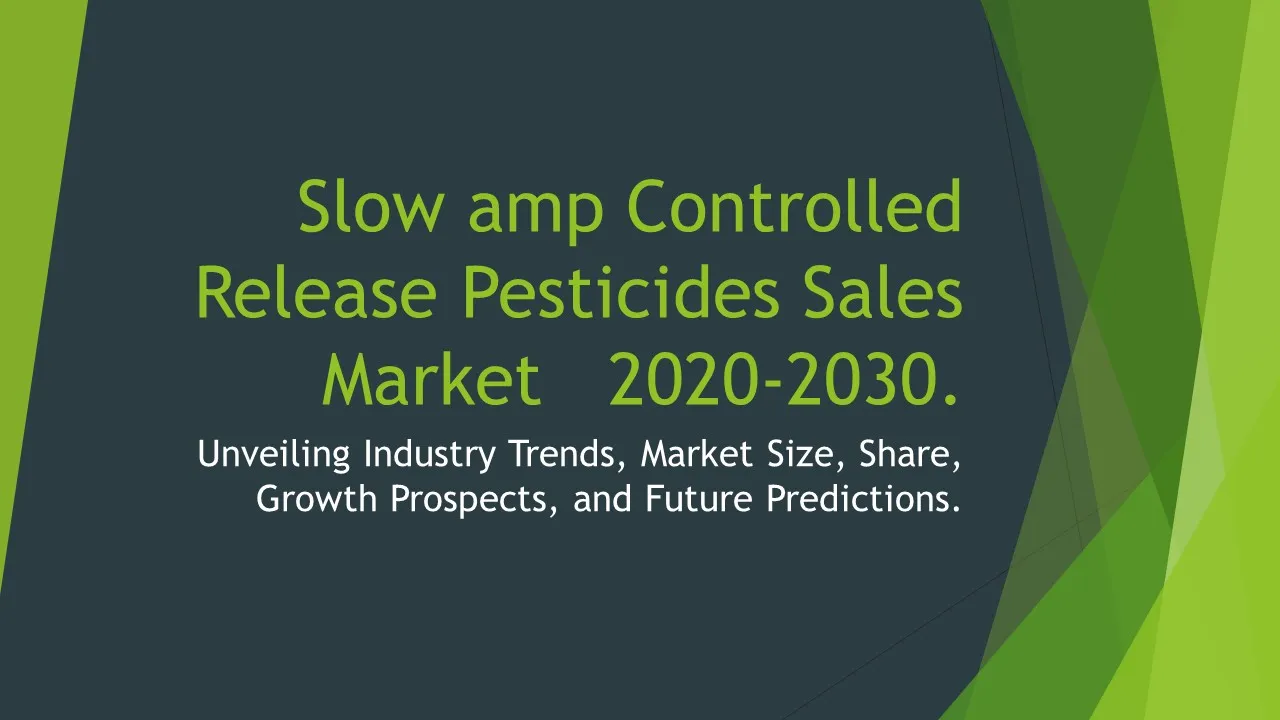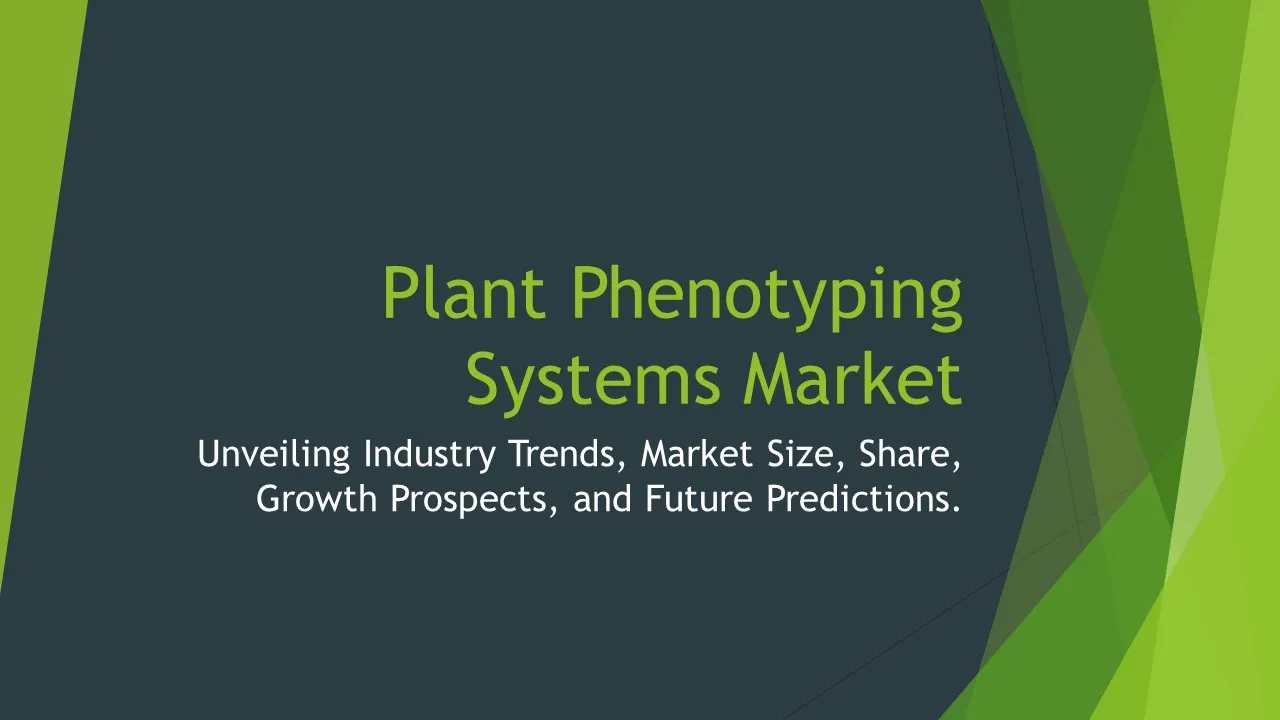Aquaponics Farming
Aquaponics Farming Market Segments - by System Type (Media-based Aquaponics, Nutrient Film Technique (NFT), Deep Water Culture (DWC), Vertical Aquaponics, and Hybrid Aquaponics), Component (Fish Tank, Grow Beds, Sump Tank, Pumps and Aeration System, and Monitoring and Control System), Application (Commercial, Home/Personal, Educational, Research, and Community), Fish Type (Tilapia, Trout, Catfish, Bass, and Carp), Vegetable Type (Lettuce, Herbs, Tomatoes, Peppers, and Cucumbers), and Region (North America, Europe, Asia Pacific, Latin America, and Middle East & Africa) - Global Industry Analysis, Growth, Share, Size, Trends, and Forecast 2025-2035
- Report Preview
- Table Of Content
- Segments
- Methodology
Aquaponics Farming Market Outlook
The global aquaponics farming market was valued at approximately USD 1.2 billion in 2023 and is expected to reach around USD 2.5 billion by 2035, growing at a CAGR of approximately 10.5% during the forecast period from 2025 to 2035. This growth is driven by increasing consumer demand for organic food, greater interest in sustainable agricultural practices, and advancements in aquaponics technology. Additionally, rising concerns regarding food security and the environmental impact of traditional agriculture are compelling many to consider aquaponics as a viable alternative. The integration of aquaculture and hydroponics not only enhances crop yield but also reduces water usage, making it an attractive option for farmers facing water scarcity. Furthermore, government initiatives promoting sustainable farming practices are expected to provide a boost to the aquaponics market, encouraging innovation and investment in the sector.
Growth Factor of the Market
The aquaponics farming market is experiencing significant growth due to a combination of technological advancements and shifting consumer preferences. The increasing population and urbanization lead to higher food demand, placing pressure on traditional farming methods. Aquaponics allows for space-efficient food production, particularly in densely populated urban areas, thus presenting an ideal solution to meet this demand. Moreover, the rise of health-conscious consumers seeking fresh, organic produce is fostering a market environment conducive to aquaponics. Additionally, with the global emphasis on sustainability and eco-friendly practices, aquaponics, which minimizes resource use while maximizing output, is gaining traction. Innovations in automation and monitoring systems are also making it easier for both commercial and personal users to manage aquaponics systems, making it accessible to a wider audience. Collectively, these factors are driving the market towards robust growth.
Key Highlights of the Market
- The aquaponics farming market is projected to grow at a CAGR of 10.5% from 2025 to 2035.
- Increased demand for organic produce and sustainable farming methods is a primary growth driver.
- Technological advancements are making aquaponics systems more accessible to various user segments, including commercial and personal applications.
- Government initiatives are supportive of innovative farming technologies, fostering investment in aquaponics.
- Urbanization is creating demand for space-efficient food production systems, positioning aquaponics favorably in urban areas.
By System Type
Media-based Aquaponics:
Media-based aquaponics is one of the most common systems used due to its relatively simple setup and operational efficiency. In this system, grow beds filled with media such as gravel or clay pellets support plant growth while providing a habitat for beneficial bacteria that convert fish waste into nutrients. This method allows for the cultivation of a diverse range of plants, as the media retains moisture and nutrients effectively. The integration of nutrient cycling between fish and plants not only improves yield but also enhances the overall health of the aquaponics system. As this method is beginner-friendly, it is particularly popular among home hobbyists and educational institutions that wish to implement hands-on learning experiences about sustainable agriculture.
Nutrient Film Technique (NFT):
The Nutrient Film Technique (NFT) is a hydroponic approach that has found a niche in aquaponics due to its efficiency in nutrient delivery. In this method, a thin film of water enriched with nutrients flows over the plant roots, which are supported by sloped channels. This system requires careful management of water flow and nutrient concentration, but it offers significant advantages in terms of space efficiency and water conservation. NFT systems are particularly suited for leafy greens and herbs, which thrive in this environment. The rapid growth rates and increased nutrient uptake make NFT a preferred choice for commercial aquaponic ventures looking to maximize yield while minimizing resource use.
Deep Water Culture (DWC):
Deep Water Culture (DWC) is another popular aquaponics system characterized by plants being suspended in a nutrient-rich water solution. The roots are submerged in water, allowing for optimal nutrient absorption and oxygen supply. Aeration systems are crucial in DWC, as they ensure that the water remains oxygenated for the fish and plant roots. This method is particularly effective for growing larger crops such as tomatoes and cucumbers. The simplicity of DWC setups and their ability to produce high yields make them attractive to both commercial growers and urban gardeners. Overall, DWC systems offer scalability, allowing for expansion as demand for produce increases.
Vertical Aquaponics:
Vertical aquaponics represents a groundbreaking approach in which plants are grown in stacked layers, optimizing space utilization significantly. This system suits urban environments where land availability is limited. The vertical arrangement allows for higher density planting, which translates into greater yields per square foot. Moreover, vertical systems can incorporate various growing techniques, such as NFT or media-based methods, enabling flexibility in plant selection. The integration of energy-efficient lighting and climate control technologies enhances the productivity of these systems, making vertical aquaponics a promising segment for future market growth as urban populations continue to rise.
Hybrid Aquaponics:
Hybrid aquaponics systems combine elements from various aquaponic methods to leverage their strengths while mitigating weaknesses. This approach allows farmers to customize their systems based on specific crop requirements, fish types, and environmental conditions. By blending different techniques, such as media-based and NFT systems, growers can optimize nutrient delivery and water efficiency. The versatility of hybrid systems makes them suitable for diverse applications, from small-scale home setups to large commercial operations. As growers increasingly seek tailored solutions to improve productivity and resilience, hybrid aquaponics is gaining traction and is expected to be a significant segment in the overall market.
By Nutrient Film Technique
Static NFT:
Static NFT is a variation of the Nutrient Film Technique where the nutrient solution is not continuously flowing. Instead, the solution is present in a shallow layer, allowing for optimal nutrient uptake by plants. This method can reduce the complexity of the system since it requires fewer pumps and less monitoring. Static NFT is particularly effective for small-scale and home aquaponics systems, where simplicity and ease of use are paramount. Its lower operational costs and reduced maintenance requirements can attract novice aquaponics enthusiasts looking to experiment with sustainable gardening.
Active NFT:
Active NFT involves a continuously flowing nutrient solution, ensuring that plants receive a consistent supply of nutrients and oxygen. This method promotes healthy plant growth and optimal nutrient absorption, as the film of water continuously flows over the roots. Active NFT systems can be more complex to manage, requiring careful monitoring of nutrient levels and flow rates. However, they are highly efficient and can support a wide variety of crops, making them a popular choice for commercial aquaponics operations. The ability to scale up production while maintaining quality makes active NFT a significant segment within the nutrient film technique category.
By Deep Water Culture
Classic DWC:
Classic Deep Water Culture (DWC) is the traditional method where plants are directly supported in a nutrient-filled basin, with their roots submerged in water. This technique is known for its simplicity and effectiveness in delivering nutrients and oxygen directly to the root zone. The classic DWC setup can be utilized for a variety of crops, including herbs and leafy greens, allowing for rapid growth rates and high yields. The ease of installation and management makes classic DWC a favored choice among both beginners and experienced aquaponics practitioners looking to maximize their productivity in a small footprint.
Modified DWC:
Modified Deep Water Culture incorporates additional features or components to enhance the traditional DWC system. This may include aeration devices, nutrient management systems, or integration with other growing techniques to improve efficiency and crop yield. By adapting the classic method, modified DWC systems can offer greater flexibility, allowing growers to tailor the setup to their specific crop requirements or environmental conditions. This adaptability is gaining popularity among commercial growers who seek to optimize their operations while maintaining high-quality produce.
By Component
Fish Tank:
The fish tank is a critical component of any aquaponics system, serving as the habitat for fish and the source of nutrients for plants. The size and design of the tank can vary significantly depending on the scale of the operation, ranging from small home systems to large commercial setups. Proper management of water quality, temperature, and fish health is essential for maintaining a productive aquaponics environment. The fish tank not only supports fish growth but also plays a pivotal role in nutrient cycling, providing the necessary waste for plant absorption. As the aquaponics market grows, innovations in fish tank design focused on efficiency and ease of maintenance are emerging, enhancing the overall sustainability of the system.
Grow Beds:
Grow beds are where plants are cultivated, and they play a crucial role in the aquaponics system by filtering water and providing a medium for plant roots. The materials used in grow beds can vary, including gravel, clay pellets, or coconut coir, each offering unique benefits for plant growth. The design and configuration of grow beds can also differ, affecting the efficiency of nutrient absorption and water flow. Effective management of grow beds is essential, as they must balance aeration, moisture retention, and nutrient availability. Innovations in grow bed technology are continuously being developed to enhance productivity and simplify the growing process, making them a vital component of modern aquaponics systems.
Sump Tank:
The sump tank serves as the reservoir for water in aquaponics systems, collecting water from the grow beds and returning it to the fish tank. This component is essential for maintaining water circulation and ensuring that both fish and plants thrive. Proper design and maintenance of the sump tank help prevent issues such as water stagnation and contamination. Effective management of water levels and quality in the sump tank is critical for sustaining the health of the overall system. Innovations in sump tank design that allow for better filtration and water treatment are becoming increasingly popular, enhancing the efficiency and sustainability of aquaponics farming.
Pumps and Aeration System:
Pumps and aeration systems are vital for maintaining the circulation of water and oxygen throughout aquaponics systems. These components ensure that fish receive adequate oxygen and that nutrient-rich water is delivered to the plant roots. The efficiency and reliability of pumps are crucial, as any malfunction can lead to severe consequences for both fish and plants. Aeration systems, which can include air stones or diffusers, help maintain optimal oxygen levels in the water, promoting fish health and improving plant growth rates. Advances in pump technology and aeration systems are increasing the sustainability and efficiency of aquaponics operations, making them essential components of modern systems.
Monitoring and Control System:
Monitoring and control systems are becoming increasingly integrated into aquaponics operations, enabling real-time tracking of critical parameters such as water quality, temperature, and nutrient levels. These systems not only enhance operational efficiency but also provide valuable data for optimizing plant and fish health. Automated monitoring solutions can alert growers to any deviations from optimal conditions, allowing for timely interventions. The growing trend towards smart farming solutions means that advanced monitoring systems equipped with IoT capabilities are becoming commonplace, providing both novice and experienced aquaponics practitioners with the tools needed for successful management of their systems.
By Application
Commercial:
The commercial segment of the aquaponics market encompasses large-scale operations aiming to produce significant quantities of fish and vegetables for sale. This segment is characterized by sophisticated systems that often utilize advanced technologies for monitoring and control, ensuring high productivity and sustainability. Commercial aquaponics operations provide an opportunity for growers to meet the increasing demand for organic produce while maintaining profitability. With a focus on efficiency and quality, commercial aquaponics is expected to be a major driver of market growth as businesses seek to capitalize on the growing consumer preference for sustainable food sources.
Home/Personal:
The home or personal segment of the aquaponics market is gaining traction as individuals seek sustainable gardening options for their households. These systems are typically smaller and designed for ease of use, making them accessible for urban dwellers or hobbyists interested in growing their own food. Home aquaponics setups not only provide fresh produce but also serve as educational tools for teaching sustainability and self-sufficiency. The increasing availability of compact and easy-to-manage aquaponics kits is encouraging more people to explore this method of food production, contributing to the growth of the home/personal application segment.
Educational:
Educational institutions are increasingly adopting aquaponics systems as a means of teaching students about sustainable agriculture, ecology, and environmental science. These systems provide hands-on learning experiences that engage students in the principles of aquaculture and hydroponics. Schools and universities benefit from incorporating aquaponics into their curricula, fostering a greater understanding of food production methods and sustainability issues. As more educational institutions recognize the value of aquaponics for experiential learning, this segment is expected to grow, further driving market expansion.
Research:
The research segment of the aquaponics market involves academic and scientific studies aimed at improving aquaponics techniques, understanding nutrient cycling, and developing new crop varieties. This application is crucial for advancing the field and enhancing the sustainability and efficiency of aquaponics systems. Research institutions collaborate with industry players to test innovations and explore the potential of aquaponics in addressing food security challenges. Continued investment in research and development is essential for driving technological advancements, leading to increased adoption and improved practices within the aquaponics sector.
Community:
Community aquaponics initiatives are becoming increasingly popular as local groups come together to establish shared systems that promote food sovereignty and sustainability. These projects often focus on educating community members about food production and building local food networks. By pooling resources and knowledge, community aquaponics systems can provide fresh produce to underserved populations while fostering a sense of community and collaboration. As awareness of food security issues grows, community-based aquaponics initiatives are poised to contribute significantly to the overall market, enhancing local food systems and promoting sustainable practices.
By Fish Type
Tilapia:
Tilapia is one of the most popular fish species in aquaponics due to its hardiness and rapid growth rates. Known for its adaptability to various water conditions, tilapia thrives in aquaponics systems where it provides valuable nutrients for plant growth. This species is favored for both commercial and home aquaponics setups, as it is relatively low-maintenance and can be grown in high densities. With an increasing demand for tilapia in the global market, aquaponics systems featuring this fish type are well-positioned for sustainable production and profitability.
Trout:
Trout is another significant fish type in aquaponics, particularly in cooler climates where it thrives in lower water temperatures. Known for its high nutritional value and flavor, trout offers a lucrative option for aquaponic producers. However, managing trout in aquaponics systems requires careful attention to water quality and temperature, as they are sensitive to environmental changes. The growing interest in premium fish products presents an opportunity for aquaponics operations specializing in trout, as consumers increasingly seek out high-quality, sustainably sourced seafood.
Catfish:
Catfish are a popular choice in aquaponics due to their hardiness and ability to thrive in various water conditions. This species is known for its growth rate and adaptability, making it suitable for both commercial and small-scale aquaponics systems. Catfish farming can be particularly beneficial in warmer climates, where they can be raised year-round. As consumer interest in diverse seafood options increases, catfish aquaponics is gaining traction as a sustainable and profitable venture.
Bass:
Bass species, such as largemouth and smallmouth bass, are becoming increasingly popular in aquaponics systems due to their market demand and value. These fish require careful management of water quality and temperature, but when raised properly, they can provide high yields. Bass are often sought after by sport fishermen and culinary enthusiasts alike, making them an attractive option for aquaponic producers targeting niche markets. As the aquaponics sector grows, bass farming may see increased interest from both commercial growers and hobbyists.
Carp:
Carp are a hardy fish species that can thrive in various environmental conditions, making them well-suited for aquaponics systems. Known for their ability to tolerate lower water quality, carp require less stringent management compared to other fish species. This characteristic makes them an appealing option for beginners or smaller operations looking to establish a sustainable aquaponics system. Additionally, as interest in sustainable and low-impact food production grows, carp aquaponics is likely to gain popularity, particularly in regions where carp is a traditional food source.
By Vegetable Type
Lettuce:
Lettuce is one of the most commonly grown vegetables in aquaponics due to its rapid growth and adaptability to different growing conditions. This leafy green thrives in nutrient-rich water, making it an ideal candidate for both commercial and home aquaponics systems. The short growth cycles of lettuce allow for multiple harvests throughout the year, maximizing productivity for growers. Furthermore, with the increasing consumer preference for fresh, organic produce, lettuce aquaponics presents a lucrative opportunity for sustainable farming initiatives.
Herbs:
Herbs such as basil, mint, and cilantro are highly sought after in aquaponics due to their quick growth and high market demand. These plants thrive in aquaponics systems where they can absorb nutrients efficiently from the water. Growing herbs in aquaponics allows for diverse farming practices and product offerings, appealing to both consumers and chefs alike. The ability to grow herbs year-round in controlled conditions further enhances their appeal, making them a popular choice for both commercial growers and home enthusiasts interested in culinary gardening.
Tomatoes:
Tomatoes are a favored crop in aquaponics due to their high nutritional value and extensive culinary applications. These plants benefit from the nutrient-rich environment provided by aquaponics systems, resulting in robust growth and excellent flavor. However, growing tomatoes in aquaponics requires careful management of water, light, and temperature to ensure optimal yields. With the increasing demand for locally produced and organic tomatoes, aquaponics systems focusing on this vegetable type are poised for growth, appealing to health-conscious consumers and restaurants seeking fresh produce.
Peppers:
Peppers, including bell peppers and hot peppers, are increasingly being cultivated in aquaponics systems due to their diverse culinary uses and market demand. These plants thrive in nutrient-rich water, benefiting from the symbiotic relationship between fish and plants in aquaponics. Growing peppers in controlled environments allows for year-round production, enhancing their availability in local markets. As consumers seek fresh and sustainably sourced produce, aquaponics systems featuring peppers are well-positioned to meet this demand and provide lucrative opportunities for growers.
Cucumbers:
Cucumbers are an ideal vegetable for aquaponics due to their fast growth and high yield potential. This crop thrives in the nutrient-rich environment of aquaponics systems, benefiting from the natural fertilization provided by fish waste. Cucumbers can be grown vertically, making them space-efficient and suitable for both commercial and home aquaponics setups. The increasing consumer preference for fresh produce and the demand for organic vegetables further bolster the appeal of cucumber aquaponics, positioning it as a significant segment within the market.
By Region
The North American aquaponics market is experiencing rapid growth, driven by increasing consumer awareness of sustainable farming practices and the demand for organic produce. The region is projected to grow at a CAGR of 11% from 2025 to 2035, with commercial aquaponics operations expanding in both rural and urban areas. The integration of advanced technologies, such as automation and smart monitoring systems, is enhancing the efficiency of aquaponic farms in North America. Furthermore, government support for sustainable agriculture is encouraging investment in aquaponics, providing a favorable environment for growth and innovation.
In Europe, the aquaponics market is also on the rise, spurred by a growing emphasis on food sustainability and innovation in agricultural practices. With a focus on reducing carbon footprints and enhancing food security, European countries are adopting aquaponics as a viable alternative to traditional farming. The market is expected to grow steadily, with the potential for significant expansion in community-focused aquaponics initiatives and commercial operations. As consumers increasingly seek local and organic products, Europe presents a promising landscape for aquaponics farming, contributing to the overall growth of the global market.
Opportunities
One of the most significant opportunities within the aquaponics farming market lies in the growing trend of urban agriculture. As cities expand and populations increase, the demand for local food sources is becoming more critical. Aquaponics systems, which can be implemented in limited spaces such as rooftops or vacant lots, provide an efficient means of producing fresh food close to urban consumers. This method not only reduces transportation costs and carbon emissions but also enhances the availability of quality produce in food deserts—areas lacking access to fresh food. Entrepreneurs and investors are increasingly recognizing the potential of urban aquaponics to meet this demand, promoting innovative designs and practices that cater specifically to urban environments.
Another promising opportunity lies in the integration of technology within aquaponics systems. Smart farming solutions, including IoT devices, AI-driven monitoring systems, and data analytics, are revolutionizing the way aquaponics farms operate. These technologies allow for real-time tracking of environmental conditions, optimizing growth rates and resource use. As sustainable farming practices become more desirable, the adoption of cutting-edge technology will be vital in enhancing productivity and profitability in aquaponics. Companies focused on developing smart aquaponics systems are likely to experience significant growth, tapping into a market eager for efficiency and sustainability.
Threats
Despite its growth potential, the aquaponics farming market faces several threats. One of the primary concerns is the risk of system failure due to equipment malfunctions or inadequate management practices. Aquaponics systems rely on a delicate balance between fish and plant health, and disruptions can lead to significant losses. Furthermore, inexperienced growers may struggle to maintain this balance without proper training or knowledge, resulting in financial setbacks. As the market expands, addressing the need for education and training for newcomers in aquaponics will be essential to mitigate this threat and ensure long-term sustainability in the industry.
Additionally, competition from conventional farming methods poses a threat to the aquaponics market. Traditional agriculture has established supply chains and economies of scale that can make it challenging for aquaponics operations to compete on price. Consumers may not always recognize the added value of sustainably produced aquaponics products, particularly in markets where price sensitivity is a significant factor. To overcome this challenge, aquaponics producers must effectively communicate the benefits of their products, emphasizing quality, sustainability, and the environmental advantages of aquaponics over conventional methods.
Competitor Outlook
- AquaSprouts
- Nelson and Pade
- Green Spirit Farms
- Urban Harvest
- Biofloc Aquaculture
- Friendly Aquaponics
- Greenhouse Megastore
- Emerald Aquaponics
- Eco-Lite Aquaponics
- Aquaponic Source
- Logan’s Garden
- Simply Aquaponics
- Bigelow Brook Farm
- Perpetual Harvest
- Urban Farm Company
The competitive landscape of the aquaponics farming market is characterized by a diverse range of players, including small startups, established companies, and educational institutions actively engaging in research and development. Companies are continually innovating to enhance their product offerings, focusing on sustainability, efficiency, and technology integration. The presence of numerous players creates a dynamic market environment where new ideas and innovations can flourish, contributing to the overall
1 Appendix
- 1.1 List of Tables
- 1.2 List of Figures
2 Introduction
- 2.1 Market Definition
- 2.2 Scope of the Report
- 2.3 Study Assumptions
- 2.4 Base Currency & Forecast Periods
3 Market Dynamics
- 3.1 Market Growth Factors
- 3.2 Economic & Global Events
- 3.3 Innovation Trends
- 3.4 Supply Chain Analysis
4 Consumer Behavior
- 4.1 Market Trends
- 4.2 Pricing Analysis
- 4.3 Buyer Insights
5 Key Player Profiles
- 5.1 AquaSprouts
- 5.1.1 Business Overview
- 5.1.2 Products & Services
- 5.1.3 Financials
- 5.1.4 Recent Developments
- 5.1.5 SWOT Analysis
- 5.2 Urban Harvest
- 5.2.1 Business Overview
- 5.2.2 Products & Services
- 5.2.3 Financials
- 5.2.4 Recent Developments
- 5.2.5 SWOT Analysis
- 5.3 Nelson and Pade
- 5.3.1 Business Overview
- 5.3.2 Products & Services
- 5.3.3 Financials
- 5.3.4 Recent Developments
- 5.3.5 SWOT Analysis
- 5.4 Aquaponic Source
- 5.4.1 Business Overview
- 5.4.2 Products & Services
- 5.4.3 Financials
- 5.4.4 Recent Developments
- 5.4.5 SWOT Analysis
- 5.5 Perpetual Harvest
- 5.5.1 Business Overview
- 5.5.2 Products & Services
- 5.5.3 Financials
- 5.5.4 Recent Developments
- 5.5.5 SWOT Analysis
- 5.6 Simply Aquaponics
- 5.6.1 Business Overview
- 5.6.2 Products & Services
- 5.6.3 Financials
- 5.6.4 Recent Developments
- 5.6.5 SWOT Analysis
- 5.7 Bigelow Brook Farm
- 5.7.1 Business Overview
- 5.7.2 Products & Services
- 5.7.3 Financials
- 5.7.4 Recent Developments
- 5.7.5 SWOT Analysis
- 5.8 Emerald Aquaponics
- 5.8.1 Business Overview
- 5.8.2 Products & Services
- 5.8.3 Financials
- 5.8.4 Recent Developments
- 5.8.5 SWOT Analysis
- 5.9 Green Spirit Farms
- 5.9.1 Business Overview
- 5.9.2 Products & Services
- 5.9.3 Financials
- 5.9.4 Recent Developments
- 5.9.5 SWOT Analysis
- 5.10 Urban Farm Company
- 5.10.1 Business Overview
- 5.10.2 Products & Services
- 5.10.3 Financials
- 5.10.4 Recent Developments
- 5.10.5 SWOT Analysis
- 5.11 Biofloc Aquaculture
- 5.11.1 Business Overview
- 5.11.2 Products & Services
- 5.11.3 Financials
- 5.11.4 Recent Developments
- 5.11.5 SWOT Analysis
- 5.12 Eco-Lite Aquaponics
- 5.12.1 Business Overview
- 5.12.2 Products & Services
- 5.12.3 Financials
- 5.12.4 Recent Developments
- 5.12.5 SWOT Analysis
- 5.13 Friendly Aquaponics
- 5.13.1 Business Overview
- 5.13.2 Products & Services
- 5.13.3 Financials
- 5.13.4 Recent Developments
- 5.13.5 SWOT Analysis
- 5.14 Greenhouse Megastore
- 5.14.1 Business Overview
- 5.14.2 Products & Services
- 5.14.3 Financials
- 5.14.4 Recent Developments
- 5.14.5 SWOT Analysis
- 5.15 LoganâÂÂs Garden
- 5.15.1 Business Overview
- 5.15.2 Products & Services
- 5.15.3 Financials
- 5.15.4 Recent Developments
- 5.15.5 SWOT Analysis
- 5.1 AquaSprouts
6 Market Segmentation
- 6.1 Aquaponics Farming Market, By Component
- 6.1.1 Fish Tank
- 6.1.2 Grow Beds
- 6.1.3 Sump Tank
- 6.1.4 Pumps and Aeration System
- 6.1.5 Monitoring and Control System
- 6.2 Aquaponics Farming Market, By Fish Type
- 6.2.1 Tilapia
- 6.2.2 Trout
- 6.2.3 Catfish
- 6.2.4 Bass
- 6.2.5 Carp
- 6.3 Aquaponics Farming Market, By Application
- 6.3.1 Commercial
- 6.3.2 Home/Personal
- 6.3.3 Educational
- 6.3.4 Research
- 6.3.5 Community
- 6.4 Aquaponics Farming Market, By System Type
- 6.4.1 Media-based Aquaponics
- 6.4.2 Nutrient Film Technique (NFT)
- 6.4.3 Deep Water Culture (DWC)
- 6.4.4 Vertical Aquaponics
- 6.4.5 Hybrid Aquaponics
- 6.5 Aquaponics Farming Market, By Vegetable Type
- 6.5.1 Lettuce
- 6.5.2 Herbs
- 6.5.3 Tomatoes
- 6.5.4 Peppers
- 6.5.5 Cucumbers
- 6.1 Aquaponics Farming Market, By Component
7 Competitive Analysis
- 7.1 Key Player Comparison
- 7.2 Market Share Analysis
- 7.3 Investment Trends
- 7.4 SWOT Analysis
8 Research Methodology
- 8.1 Analysis Design
- 8.2 Research Phases
- 8.3 Study Timeline
9 Future Market Outlook
- 9.1 Growth Forecast
- 9.2 Market Evolution
10 Geographical Overview
- 10.1 Europe - Market Analysis
- 10.1.1 By Country
- 10.1.1.1 UK
- 10.1.1.2 France
- 10.1.1.3 Germany
- 10.1.1.4 Spain
- 10.1.1.5 Italy
- 10.1.1 By Country
- 10.2 Asia Pacific - Market Analysis
- 10.2.1 By Country
- 10.2.1.1 India
- 10.2.1.2 China
- 10.2.1.3 Japan
- 10.2.1.4 South Korea
- 10.2.1 By Country
- 10.3 Latin America - Market Analysis
- 10.3.1 By Country
- 10.3.1.1 Brazil
- 10.3.1.2 Argentina
- 10.3.1.3 Mexico
- 10.3.1 By Country
- 10.4 North America - Market Analysis
- 10.4.1 By Country
- 10.4.1.1 USA
- 10.4.1.2 Canada
- 10.4.1 By Country
- 10.5 Aquaponics Farming Market by Region
- 10.6 Middle East & Africa - Market Analysis
- 10.6.1 By Country
- 10.6.1.1 Middle East
- 10.6.1.2 Africa
- 10.6.1 By Country
- 10.1 Europe - Market Analysis
11 Global Economic Factors
- 11.1 Inflation Impact
- 11.2 Trade Policies
12 Technology & Innovation
- 12.1 Emerging Technologies
- 12.2 AI & Digital Trends
- 12.3 Patent Research
13 Investment & Market Growth
- 13.1 Funding Trends
- 13.2 Future Market Projections
14 Market Overview & Key Insights
- 14.1 Executive Summary
- 14.2 Key Trends
- 14.3 Market Challenges
- 14.4 Regulatory Landscape
Segments Analyzed in the Report
The global Aquaponics Farming market is categorized based on
By System Type
- Media-based Aquaponics
- Nutrient Film Technique (NFT)
- Deep Water Culture (DWC)
- Vertical Aquaponics
- Hybrid Aquaponics
By Component
- Fish Tank
- Grow Beds
- Sump Tank
- Pumps and Aeration System
- Monitoring and Control System
By Application
- Commercial
- Home/Personal
- Educational
- Research
- Community
By Fish Type
- Tilapia
- Trout
- Catfish
- Bass
- Carp
By Vegetable Type
- Lettuce
- Herbs
- Tomatoes
- Peppers
- Cucumbers
By Region
- North America
- Europe
- Asia Pacific
- Latin America
- Middle East & Africa
Key Players
- AquaSprouts
- Nelson and Pade
- Green Spirit Farms
- Urban Harvest
- Biofloc Aquaculture
- Friendly Aquaponics
- Greenhouse Megastore
- Emerald Aquaponics
- Eco-Lite Aquaponics
- Aquaponic Source
- Loganâs Garden
- Simply Aquaponics
- Bigelow Brook Farm
- Perpetual Harvest
- Urban Farm Company
- Publish Date : Jan 20 ,2025
- Report ID : AG-577
- No. Of Pages : 100
- Format : |
- Ratings : 4.5 (110 Reviews)









